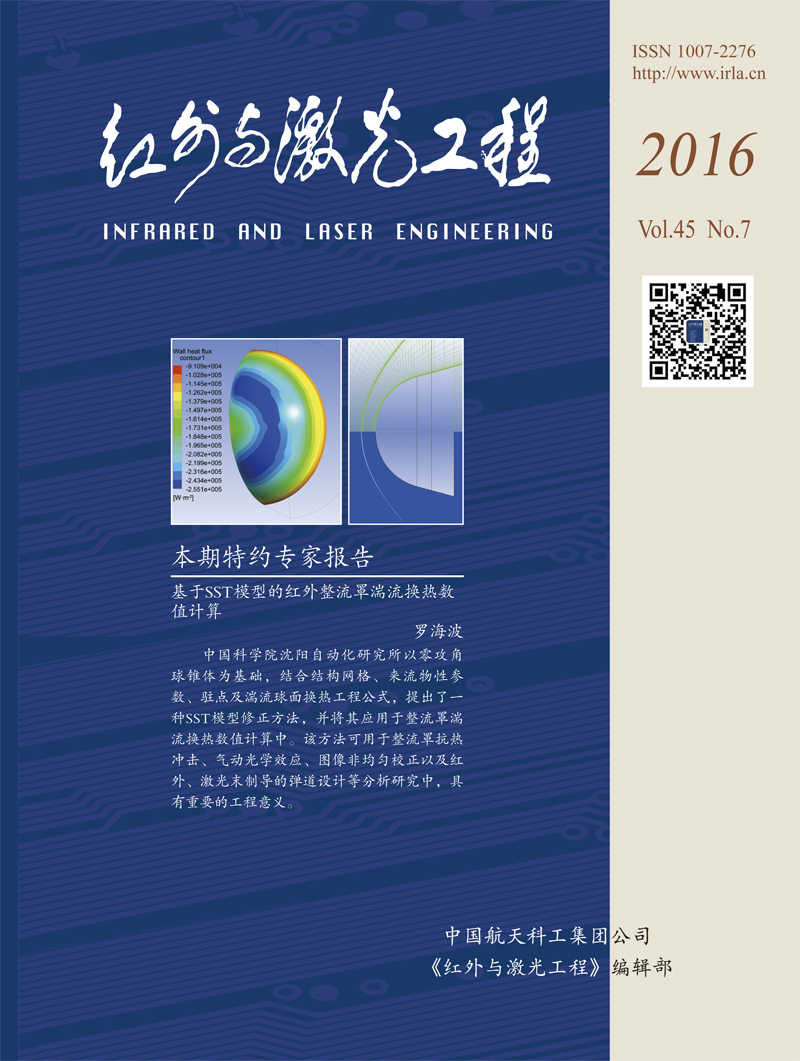Zhang Xiaolei, Zhang Xiangchao, Xiao Hong, Xu Min. Speckle removal in phase reconstruction of digital holography for structured surfaces[J]. Infrared and Laser Engineering, 2016, 45(7): 726002-0726002(8). doi: 10.3788/IRLA201645.0726002
| Citation:
|
Zhang Xiaolei, Zhang Xiangchao, Xiao Hong, Xu Min. Speckle removal in phase reconstruction of digital holography for structured surfaces[J]. Infrared and Laser Engineering, 2016, 45(7): 726002-0726002(8). doi: 10.3788/IRLA201645.0726002
|
Speckle removal in phase reconstruction of digital holography for structured surfaces
- 1.
Shanghai Engineering Centre of Ultra-Precision Optical Manufacturing,Fudan University,Shanghai 200438,China;
- 2.
Institute of Mechanical Manufacturing Processing,China Academy of Engineering Physics,Mianyang 621999,China
- Received Date: 2015-11-05
- Rev Recd Date:
2015-12-03
- Publish Date:
2016-07-25
-
Abstract
In recent years, digital holographic microscopy has attracted intensive attention for its capability of measuring complex shapes. There are two parts in digital holographic microscopy, hologram recording and digital diffractive reconstruction. Speckles are inevitable in the recorded interferometric patterns, thereby polluting the reconstructed surface topographies. Three reconstruction algorithms, i.e. Fresnel transform, Fresnel-wavelets and the proposed Fresnel-NSCT algorithms were compared. Three typical structures, rectangular, spherical and triangular surfaces were adopted for analysis. The performance of the three reconstruction algorithms on speckle removal and feature preservation was investigated comprehensively. Signal-Noise-Ratio(SNR) and Peak-Signal-Noise-Ratio(PSNR) were used as the numerical criteria. It is found that the Fresnel-NSCT algorithm has great superiority over the other two, subsequently it is promising for applications in the diffractive reconstruction of structured surfaces.
-
References
|
[1]
|
Zhou Mingbao, Lin Dajian, Gou Lurong, et al. Measurement of micro structure surface topography[J]. Optics and Precision Engineering, 1999, 7(3):7-13. (in Chinese) |
|
[2]
|
Conroy M, Armstrong J. A comparison of surface metrology techniques[C]//Journal of Physics Conference Series, 2006:458-465. |
|
[3]
|
Zhou Hao, Gu Jihua, Chen Daqing. Multi-plane imaging in digital holography[J]. Infrared and Laser Engineering, 2015, 44(2):513-518. (in Chinese) |
|
[4]
|
Moon I, Yi F, Rappaz B. Automated tracking of temporal displacements of a red blood cell obtained by time-lapse digital holographic microscopy[J]. Applied Optics, 2016, 55(3):1670-1674. |
|
[5]
|
Zhou Minghui, Liao Chunyan, Ren Zhaoyu, et al. Bioimaging technologies based on surface-enhanced Raman spectroscopy and their applications[J]. Chinese Optics, 2013, 6(5):633-642. (in Chinese) |
|
[6]
|
Udupa G, Ngoi B K A, Goh H C F, et al. Defect detection in unpolished Si wafers by digital shearography[J]. Measurement Science Technology, 2004, 15(1):35-43. |
|
[7]
|
Henderson V A, Griffin P F, Riis E, et al. Comparative simulations of Fresnel holography methods for atomic waveguides[J]. New Journal of Physics, 2016, 18(2). |
|
[8]
|
Wu Kun, Zhang Hexin, Meng Fei, et al. Denoising method of intensity image for laser active imaging system[J]. Infrared and Laser Engineering, 2013, 42(9):2397-2402. (in Chinese) |
|
[9]
|
Kong Qingnan, Wang Shande, Zhang Chi, et al. Influence of laser speckle average size on ghost imaging[J]. Optics and Precision Engineering, 2015, 23(10z):198-204. (in Chinese) |
|
[10]
|
Salau J, Haas J H, Thaller G, et al. Developing a multi-Kinect-system for monitoring in dairy cows:object recognition and surface analysis using wavelets.[J]. Animal, 2016, 1:1-12. |
-
-
Proportional views

-









 DownLoad:
DownLoad: